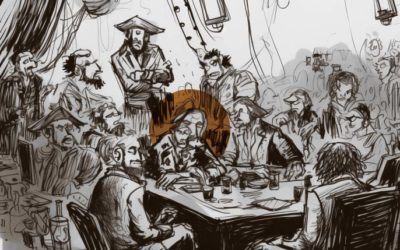In my work with executive leaders, I observe a lot of team meetings. One dynamic I take interest in is the role of the team leader in that meeting. A few people have stood out in a positive way because (1) they led very productive meetings and (2) their approach was more rare than common…. they were often the quietist person in the room.
This is contrary to what we think of as a leader and certainly contrary to what we see portrayed in movies or politics these days. However, I think there’s real value at looking at the benefits to this approach for a leader.
First, the leader can now step back and take an objective view of the problem a team is trying to solve without the tension of having to be right and convince the rest of her team.
Secondly, with this more objective view, the leader can ask the team thoughtful questions to help build the intellectual debate as opposed to a competitive winner take all approach. People can be more open-minded and focused on what’s best for the organization as opposed to being closed minded and focused on being right.
With this new objective approach, the leader gets the benefit of the collective wisdom in the room. Think of a team of people trying to collectively solve a problem without thinking of who’s going to walk out of the room as winners or losers.
One leader my colleague, Keith Hadley, and I have worked with took this approach to heart and really changed the way he led. He worked hard to: ask more curious and thought provoking questions; enter into the debate less frequently; allow the team to come to decisions on its own more often; and when a discussion got less productive (either because people were starting to repeat themselves or because team members were starting to become competitive / defensive) he would thank the team for the discussion and clearly make a decision.
He realized this approach had multiple benefits.
- The team became less silo‘d and more focused on what was best for the company as a whole
- The team members were becoming better at solving problems because he wasn’t doing it for them
- The team members took more ownership of decisions and were better able to message them to the people they led because they were more engaged when the decision was made
- When he had to step in and make a difficult decision, he was more informed because of the discussion by the team
He later admitted to us, that his job as a leader became easier by better leveraging the wisdom on the team.
At this point, there are two self-reflection questions I’d like to ask.
If you are a leader and you are the one who speaks the most during a debate, what does that say about you? Or, what does that say about the team?


